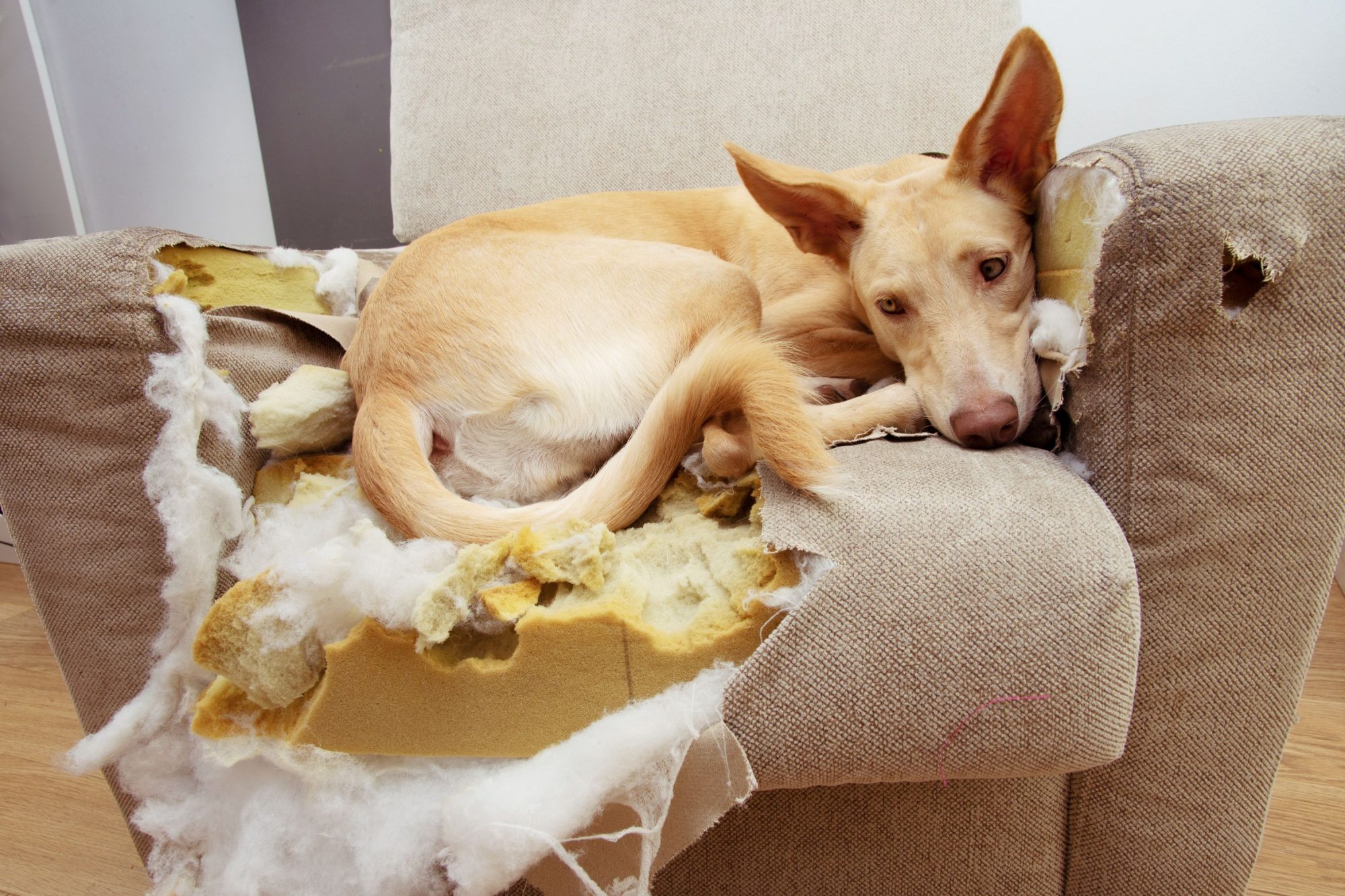Pet Separation Anxiety

Just as humans, our pets can experience separation anxiety. It affects dogs, cats, birds and other small pets. If not addressed, a pet’s anxiety can develop into chronic, lifelong behavioral problems. These problems negatively impact a pet’s ability to interact appropriately with people and other pets. They can also jeopardize the pet’s relationship with its human family and, ultimately, its own well-being.
Separation Anxiety Defined
One of the most common forms of anxiety pets experience is separation anxiety. This occurs when a pet that is not accustomed to being left alone is separated from its human family for an extended period.
Pets display separation anxiety in a variety of ways:
- Excessive howling, crying, barking, meowing, screeching (birds)
- Destructive behavior: chewing furniture, bedding, toys, pillows, carpets, clothes, shoes
- Frantic clawing or scratching on doors, windows, walls
- Heavy drooling or salivating in dogs
- Excessive pacing
- Excessive self-grooming in cats
- Excessive feather picking in birds
- Consistent “accidents” of urinating or defecating inside the house, outside of the litter box for cats
- If crated, attempts to escape the crate, often in spite of self-injury
- Vomiting or vomiting hairballs in cats
- Attempts to escape the house
- Excessive fearfulness, shyness, hiding
Underlying Causes of Separation Anxiety
There are several underlying factors that can lead to separation anxiety. Such as:
Changes in Routine – Pets naturally find security in daily structure and routine, including their daily interactions with their human family members. Since they rely on us for food, shelter, and companionship, any change in these comforts can be perceived as a threatening event that affects their overall sense of security.
Temperament – A pet’s temperament can play a big role in how it reacts to situations. A pet with a confident or calm demeanor may show very little reaction to changes in its routine or environment. Whereas, a pet with a more excitable or sensitive temperament may react with considerable distress.
Past Experiences – A pet’s past experiences with certain situations can easily influence its level of anxiety with separation in the present, especially, if the pet experienced abandonment, abuse, or anxiety behaviors that were not addressed.
Household Dynamics – Pets have much keener senses than we do and can easily sense the anxiety levels of the humans in the household. Unfortunately, human anxiety can manifest in heightened anxiety levels in a pet, especially, if the pet is very sensitive or insecure.
Failure to Address – When allowed to continue and become entrenched, separation behaviors can be more difficult to correct or manage as time goes on. They can also interfere with the relationship you have with your pet and your pet’s overall well-being. Identifying and addressing separation anxiety behaviors early on when they first develop is paramount.
Common Anxiety Triggers
While sometimes unpredictable, the following situations are common triggers for separation anxiety in pets:
- Lack of exercise and/or mental stimulation during the day.
- Rewarding previously displayed anxious behavior.
- Creating anxiety and/or excitement when you are leaving or returning.
- Lack of a sanctuary space or quiet environment that encourages rest.
- Outside threats such as loud noises, other dogs or people passing by.
- Lack of adequate sleep.
What You Can Do
Observing separation anxiety in a pet can be both distressing and frustrating. However, there are ways to help your pet adjust to being left alone. With the expertise of our pet behavior specialist, we’ve compiled the following tips to help your pet cope with being away from you:
- Give your pet regular daily mental stimulation through play time and physical exercise.
- If you haven’t already, create a structured environment for your pet by following a daily schedule for feeding, exercise and rest.
- Create a sanctuary space, such as a comfortable crate or gated area where your pet can retreat to or be kept that is quiet and calming.
- Make leaving your pet and returning a non-event. Don’t fuss over your pet when you leave and greet your pet calmly when you come home.
- Before leaving, allow your pet to enjoy time with a high value item, such as a toy or treat it will enjoy.
- Condition your pet to spend regular rest time in its sanctuary space, even when you are home. This is especially important with puppies and young dogs.
- Early socialization, confidence boosting experiences, and regular training for puppies and young dogs help create confident, resilient adult dogs.
- Don’t smother your pet with affection, save those hugs and belly rubs for when your pet is calm and able to appreciate it.
- Learn how to give your pet a gentle massage to help ease tension and reduce anxiety.
- Ask for help by consulting with our behavior specialist and veterinarians.
There are also over-the-counter pet calming products that can help pets deal with anxiety. We will be happy to discuss this option, as well as the calming products that we recommend and have available for purchase in our lobby retail store.
In some cases, if a pet’s anxiety is not improving with training or by utilizing our in-home tips, your veterinarian may decide that an anti-anxiety medication is needed.
More On Behavioral Training
At Lone Tree Veterinary Center, our behavior specialist is an expert at identifying anxiety in pets. They can help correct problems before they become entrenched and negatively impact your pet’s quality of life and its relationship with you. They will be happy to discuss your concerns with you and recommend the best course of action for your pet.
If your pet is experiencing separation anxiety or any other problem, please don’t hesitate to contact us, as we are here to help your pets have healthy lives with you!

